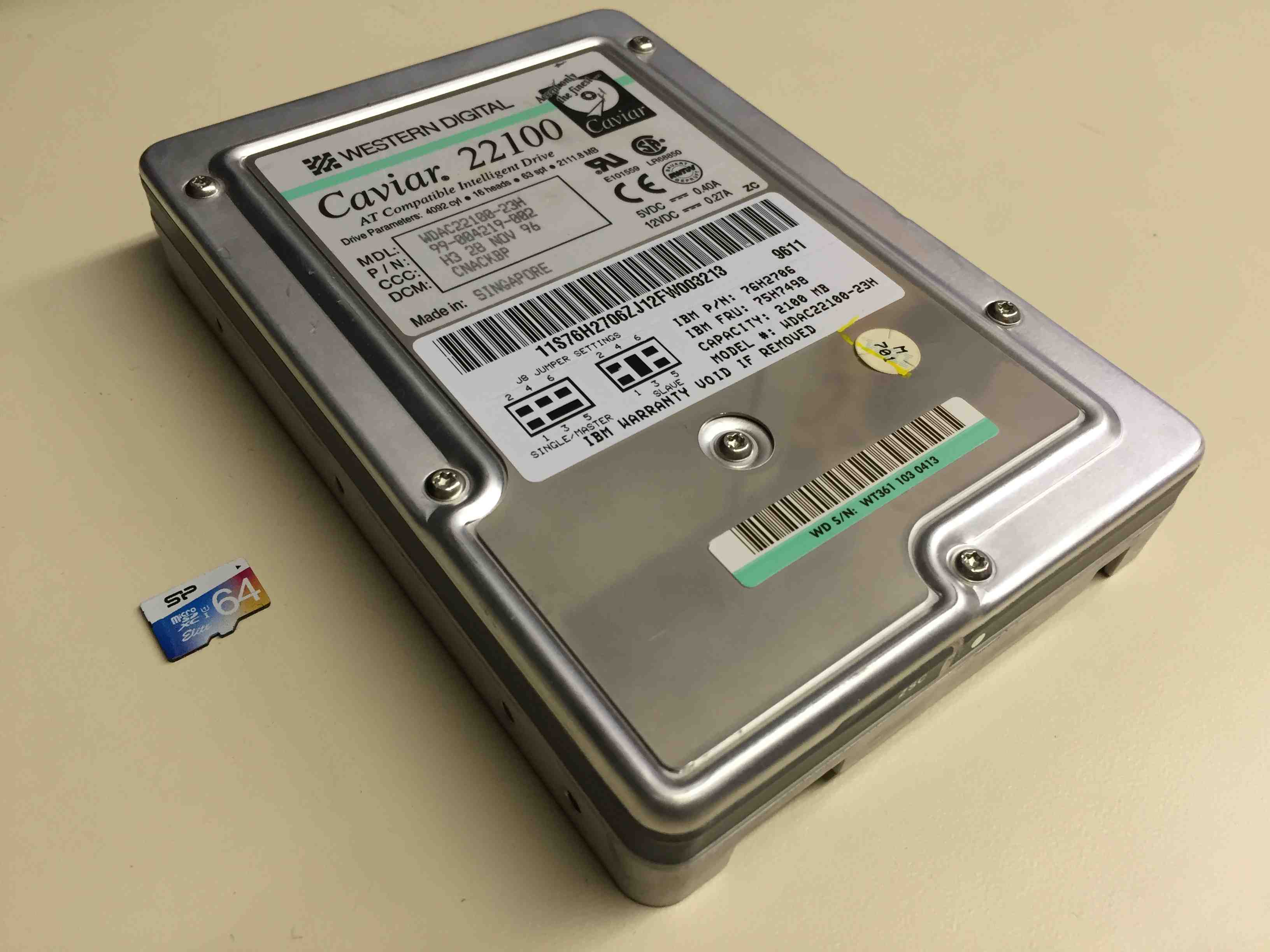TITLE: This Week's Edition of "Amazed by Computers"
AUTHOR: Eugene Wallingford
DATE: January 15, 2016 4:02 PM
DESC:
-----
BODY:
As computer scientists get older, we all find ourselves reminiscing
about the computers we knew in the past. I sometimes tell my
students about using 5.25" floppies with capacities listed in
kilobytes, a unit for which they have no frame of reference. It
always gets a laugh.
In
a recent blog entry,
Daniel Lemire reminisces about the Cray 2, "the most powerful
computer that money could buy" when he was in high school. It was
took up more space than an office desk (see some photos
here),
had 1 GB of memory, and provided a peak performance of 1.9 gigaflops.
In contrast, a modern iPhone fits in a pocket, has 1 GB of memory,
too, and contains a graphics processing unit that provides more
gigaflops than the Cray 2.
I saw Lemire's post a day after someone tweeted
this image
of a 64 GB memory card from 2016 next to a 2 GB Western Digital hard
drive from 1996:
 The youngest students in my class this semester were born right
around 1996. Showing them a 1996 hard drive is like my college
professors showing me magnetic cores: ancient history.
This sort of story is old news, of course. Even so, I occasionally
remember to be amazed by how quickly our hardware gets smaller and
faster. I only wish I could improve my ability to make software
just as fast. Alas, we programmers must deal with the constraints
of human minds and human organizations. Hardware engineers do
battle only with the laws of the physical universe.
Lemire goes a step beyond reminiscing to close his entry:
The youngest students in my class this semester were born right
around 1996. Showing them a 1996 hard drive is like my college
professors showing me magnetic cores: ancient history.
This sort of story is old news, of course. Even so, I occasionally
remember to be amazed by how quickly our hardware gets smaller and
faster. I only wish I could improve my ability to make software
just as fast. Alas, we programmers must deal with the constraints
of human minds and human organizations. Hardware engineers do
battle only with the laws of the physical universe.
Lemire goes a step beyond reminiscing to close his entry:
And what if, today, I were to tell you that in 40 years, we will
be able to fit all the computational power of your phone into a
nanobot that can live in your blood stream?
Imagine the problems we can solve and the beauty we can make with
such hardware. The citizens of 2056 are counting on us.
-----

